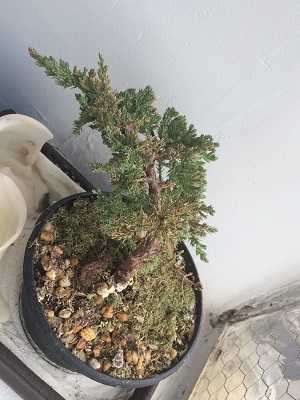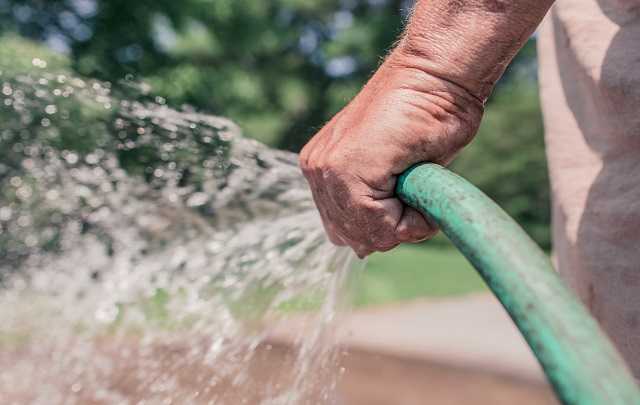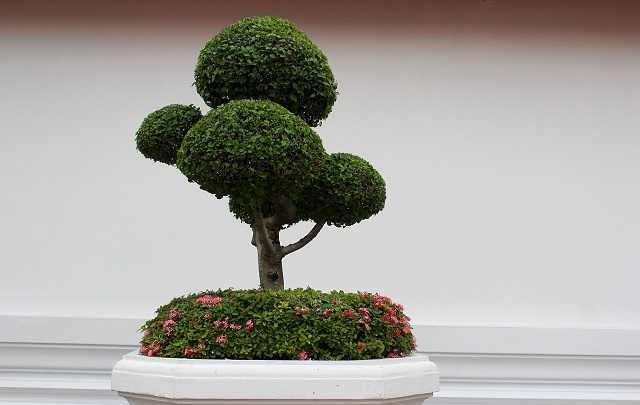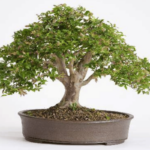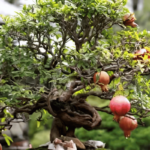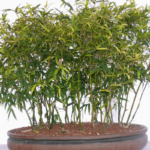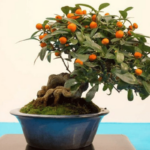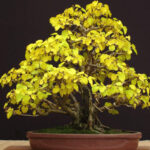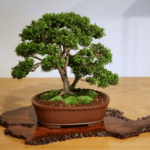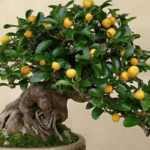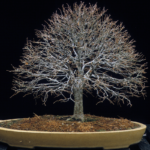Growing bonsai trees may not be very simple for beginners.
During your journey, you will likely encounter various issues with your plants.
A significant portion of these problems will manifest through signs on the leaves.
Being able to identify these signs is crucial for cultivators, whether they are beginners or experienced.
This way, you can discover what’s going wrong and how to restore your bonsai’s health.
Keep reading to learn about what yellowing, dry, falling, or burnt leaves may indicate in your bonsai.
Bonsai with Yellowing Leaves
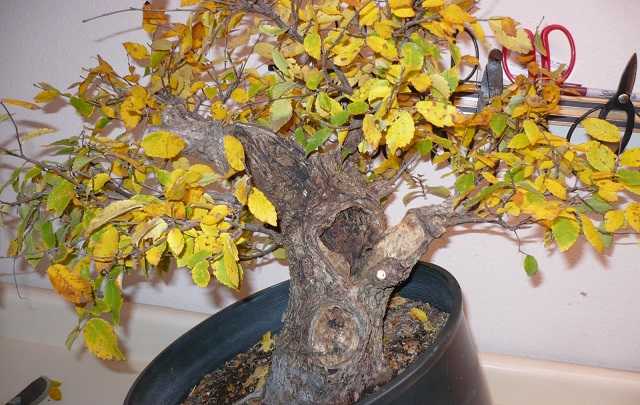
If the leaves of your bonsai are turning yellow, this can be an issue in your cultivation.
However, don’t be alarmed, as in some cases, this is normal.
To determine if your bonsai has a problem, check whether only a few or several leaves are turning yellow.
- If it’s just a few, there’s no need to worry, as this is normal.
- If multiple leaves are turning yellow at the same time, it’s a problem.
Below, you’ll find the main reasons that can cause the leaves of a bonsai to turn yellow.
Before we delve into addressing these problems, note that while combating them, the leaves won’t revert to green; they’ll only stop turning yellow.
Mineral Deficiency
In nature, trees receive nutrients from organic compounds of other trees or animals.
For example, they are “fertilized” by leaves that fall from other trees and also their own leaves.
When cultivating your bonsai, you need to provide nutrients to your plant.
These nutrients are supplied through fertilization.
If you don’t fertilize your bonsai correctly, it will lack energy, and its leaves may start to yellow.
This happens because without energy, they don’t produce enough chlorophyll.
And without chlorophyll, the leaves turn yellow.
To prevent this problem, start fertilizing your plant more effectively.
Here’s a tip: If you add a bit of steel wool (brillo pad) or ferrous sulfate to your plant, this issue may be resolved.
This is because leaves typically turn yellow due to a lack of iron.
Lack of Water
Lack of water is one of the most common problems in bonsai trees.
And it’s also one of the leading causes of their death.
Bonsai trees and other plants need water to survive; without water, they lack energy, and without energy, they die.
If this is your issue, you may notice that the leaves are wilted and dry.
To resolve this problem, simply water your bonsai correctly.
See more:
- Buxus Bonsai (Boxwood) – Step-by-Step Care Guide
- Lemon Bonsai – Discover How to Easily Cultivate Them
- Bamboo Bonsai – How to Care, Curiosities and Species
Stress
Stress is caused by significant changes in the way your bonsai lives.
For example, if it was in a place with bright light and you moved it to a location with less light, it will likely experience stress.
Some of the factors that cause stress in bonsai trees include:
- Change of location
- Repotting
- Drastic change in cultivation methods
If you’ve done something that might have stressed your bonsai, give it some time to return to normal.
Cold Exposure
Some bonsai species don’t tolerate cold temperatures well.
If you expose them to low temperatures for an extended period, their leaves may turn yellow.
This problem typically occurs during autumn and winter.
To prevent this, simply place your plant in a location with slightly higher temperature.
This will ensure that the leaves stop turning yellow.
Drying Bonsai
If you notice your bonsai’s leaves becoming dry, this can be a significant problem.
To assess the possibility of recovering your plant, do the following:
- Gently scratch the trunk of your plant
- If the lower part is green, your chances are high
- If the lower part is brown, your chances are low
The main reasons bonsai trees develop dry leaves are as follows:
Lack of Watering
As previously mentioned, inadequate watering of your bonsai is a troublesome issue.
Beginner cultivators often think that watering bonsai is the same as watering other plants.
Unfortunately, they learn they’re mistaken in the worst way possible – by losing their plants.
Bonsai trees are placed in soil with excellent water drainage.
Therefore, watering should be more frequent compared to other plants.
Normally, you’ll water your bonsai once a day, and on hotter days, water them twice a day.
Be patient; if your leaves are dry, it may take time for the situation to reverse.
Injured Roots
Roots are responsible for absorbing water and nutrients for bonsai trees.
If they’re damaged in any way, your plant will encounter issues.
There are several problems that can harm your bonsai’s roots, but one of the primary culprits is excessive water.
Essentially, excess water causes the roots to drown and rot.
Without healthy roots, your bonsai can’t absorb water, and consequently, it becomes dry.
High Temperature
This is a relatively rare case, but it can occur.
If you’re placing your bonsai in an area with very high temperatures, it can hinder your plant’s water absorption.
Without water, the leaves will dry out.
Bonsai with Falling Leaves
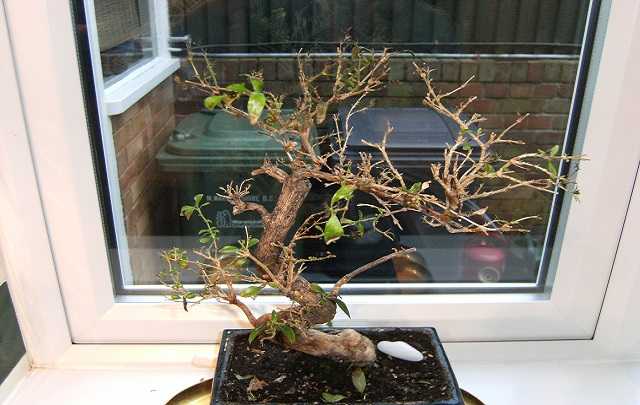
Before discussing the main problems that cause bonsai leaves to fall, there are two things you should know:
- Indoor bonsai trees usually do not lose leaves.
- Outdoor bonsai trees typically shed some of their leaves.
The main problems that can cause bonsai leaves to fall are:
Inadequate Lighting
Especially for indoor bonsai trees, ensure that they’re not receiving too little light.
Bonsai trees, for the most part, require ample light for proper growth.
Therefore, place your plant near windows so they receive plenty of light.
Furthermore, excessive light can also be an issue.
If your bonsai is receiving too much light, its leaves may burn and then fall.
Improper Watering and Stress
Both stress and excessive or insufficient watering can cause bonsai leaves to fall.
However, since we’ve already discussed water scarcity and stress, let’s focus on excess watering.
Basically, overwatering your bonsai can lead to weakened roots.
In some cases, these roots may rot, further weakening your bonsai.
Without energy, it will lose its leaves.
Pests or Diseases
Several pests can cause leaf loss.
Some gradually consume the leaves, while others sap nutrients from bonsai trees, weakening them.
Additionally, your plant can also be attacked by diseases, and when weakened, it may lose its leaves.
To learn more, read the article Pests and Diseases in Bonsai Trees.
Excess or Lack of Fertilization
If you’ve checked each of the above factors and haven’t found the cause of your bonsai’s leaf loss, don’t panic.
Excessive or insufficient fertilization can also cause this issue, although it’s relatively uncommon.
Therefore, ensure that you’re fertilizing your bonsai properly.
Bonsai with Burnt Leaves
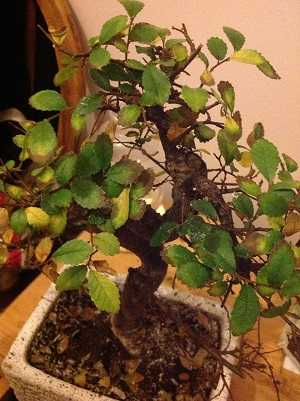
Burnt leaves are typically a result of excessive sun exposure.
If you notice your bonsai starting to develop burnt leaves, move it to a location with less sunlight.
Additionally, there are two other problems that can cause burnt leaves on bonsai trees:
- Root rot: This occurs when your plant’s roots remain wet for an extended period.
- Lack of water: Leaves burn because your bonsai can’t provide the same amount of water that leaf transpiration loses when exposed to the sun.
Conclusion – Main Problems in Bonsai Trees
These are the main problems you may encounter when cultivating your bonsai trees.
I hope this article has helped you identify and address them.
If you have any questions, feel free to leave a comment below.
Read more about bonsais:
- Mulberry Bonsai – How to Take Care of it in 7 Simple Steps
- Pomegranate Bonsai – How to Care in 6 Simple Steps
- Jabuticaba Bonsai – Step by step to having fruits
If you found this article helpful, please share it on your social media, as it greatly supports us.



